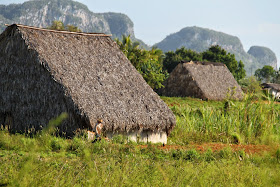What I'm writing about is not really a place, but an experience, and I certainly couldn't tell you how to get here, but it is one of the most magical things that I have ever done.

 In the Bago Yoma hills to the west of Taungoo, Myanmar there are many Karen tribes and villages, and off the dirt road to one of these isolated places is wild teak-filled jungle. It is in a small camp by a creaky wooden bridge crossing one of the narrow brown mountain rivers that a worker's camp exists, and the inhabitants are all mahouts, who train various elephants to log teak trees to be loaded onto trucks and later floated down the Ayerwaddy (Irrawaddy) River to mills and markets.
In the Bago Yoma hills to the west of Taungoo, Myanmar there are many Karen tribes and villages, and off the dirt road to one of these isolated places is wild teak-filled jungle. It is in a small camp by a creaky wooden bridge crossing one of the narrow brown mountain rivers that a worker's camp exists, and the inhabitants are all mahouts, who train various elephants to log teak trees to be loaded onto trucks and later floated down the Ayerwaddy (Irrawaddy) River to mills and markets. 
I had the privilege to visit this Elephant Worker's camp with a Taungoo doctor who goes to the camp sporadically and to the villages with medicines as part of a mobile clinic. His connection to them allowed us a special glimpse of how the elephants work.

 The first thing the mahouts have to do is fetch the elephants from the forest where they have been foraging for the night and morning. They issue a call and most of the elephants come. Occasionally a clever one does not want to come so he hides and his mahout has to go and find him. The elephants wear bells around their necks so that their whereabouts is easily determined. I loved the story about when one elephant decided to stuff his bell with mud and leaves to try and make it quiet so he would not be found!
The first thing the mahouts have to do is fetch the elephants from the forest where they have been foraging for the night and morning. They issue a call and most of the elephants come. Occasionally a clever one does not want to come so he hides and his mahout has to go and find him. The elephants wear bells around their necks so that their whereabouts is easily determined. I loved the story about when one elephant decided to stuff his bell with mud and leaves to try and make it quiet so he would not be found! Once they come in from the jungle, the elephants are dirty because they have spent all night throwing dirt and leaves on their backs (to scratch an itch and to keep the flies away), so the first thing to do is have a bath in the river. The mahouts on their shoulders often get a bath, too! They splash in the water and lie on their sides and generally look like they're having a wonderful time. Watching the trunks peeking out from below the water was fabulous, as was the scrubbing behind the ears, all to get the dirt off and prevent chafing and rashes.
Once they come in from the jungle, the elephants are dirty because they have spent all night throwing dirt and leaves on their backs (to scratch an itch and to keep the flies away), so the first thing to do is have a bath in the river. The mahouts on their shoulders often get a bath, too! They splash in the water and lie on their sides and generally look like they're having a wonderful time. Watching the trunks peeking out from below the water was fabulous, as was the scrubbing behind the ears, all to get the dirt off and prevent chafing and rashes. After the wash, we followed the elephants into the jungle where the workers felled a large teak log then cut holes in the end to loop the elephant's chain through it. One of the working elephants was a mother, and her baby followed her everywhere she went. The different sizes of the elephants determined who would lead and who would follow, and what size of log they would pull. In order to prepare the log for pulling, the elephants would first have to push the logs around the jungle with their trunks until they were in an appropriate place.
After the wash, we followed the elephants into the jungle where the workers felled a large teak log then cut holes in the end to loop the elephant's chain through it. One of the working elephants was a mother, and her baby followed her everywhere she went. The different sizes of the elephants determined who would lead and who would follow, and what size of log they would pull. In order to prepare the log for pulling, the elephants would first have to push the logs around the jungle with their trunks until they were in an appropriate place.
The last event was preparing a rough saddle and taking us for a ride on the elephants. The elephants were afraid of us because the only trouser wearing people are those that give them injections. One elephant was also too afraid to cross the bridge so decided to turn around half way across and then cross the river through the water. They are amazing creatures and this was a truly out of the ordinary experience!
Source: You can read my diary of the trip here.













































